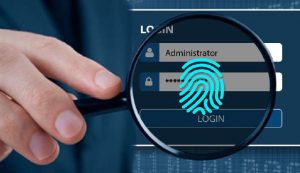Endpoint Protection
 A complete Endpoint Protection (EPP) solution is a central component of an Enterprise Workforce security framework.
A complete Endpoint Protection (EPP) solution is a central component of an Enterprise Workforce security framework.
This safeguards devices like computers, laptops, mobile devices, and servers from cyber threats, and the main component capabilities that form a comprehensive EPP solution include:
- Antivirus and Anti-Malware: Detects and removes viruses, ransomware, spyware, trojans, and other malicious software using signature-based, heuristic, and behavioral analysis.
- Firewall Protection: Monitors and controls incoming and outgoing network traffic to block unauthorized access and prevent data exfiltration.
- Intrusion Detection and Prevention (IDPS): Identifies and blocks suspicious activities or potential exploits targeting endpoint vulnerabilities in real time.
- Endpoint Detection and Response (EDR): Provides continuous monitoring, threat hunting, and automated response to advanced threats, including detailed incident investigation and remediation.
- Application Control: Restricts unauthorized or unapproved applications from running, reducing the attack surface by allowing only trusted software.
- Device Control: Manages access to external devices (e.g., USB drives) to prevent data leakage or introduction of malware.
- Data Loss Prevention (DLP): Protects sensitive data by monitoring and controlling data transfers, ensuring compliance with privacy regulations.
- Encryption: Secures data at rest and in transit using full-disk encryption or file-level encryption to prevent unauthorized access.
- Patch Management: Identifies and applies software updates and security patches to mitigate vulnerabilities in operating systems and applications.
- Behavioral Analysis and Machine Learning: Uses AI-driven techniques to detect zero-day threats and anomalies by analyzing endpoint behavior patterns.
- Web and Email Security: Filters malicious websites, phishing attempts, and email attachments to prevent web-based and email-borne threats.
- Centralized Management and Reporting: Provides a unified console for policy enforcement, monitoring, and generating compliance reports across all endpoints.
- Mobile Device Management (MDM): Secures mobile endpoints by enforcing security policies, remote wiping, and managing app permissions.
- Threat Intelligence Integration: Leverages real-time global threat intelligence feeds to stay updated on emerging threats and attack vectors.
- Host-Based Intrusion Prevention System (HIPS): Monitors system activities and blocks exploits targeting system processes or memory.
These capabilities work together to provide layered security, ensuring endpoints are protected against a wide range of threats while maintaining performance and compliance. If you need details on any specific component or implementation guidance, let me know!